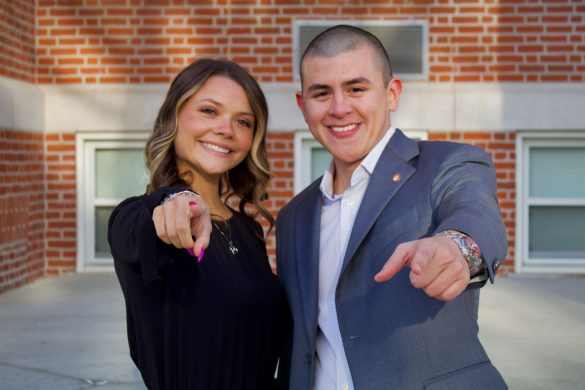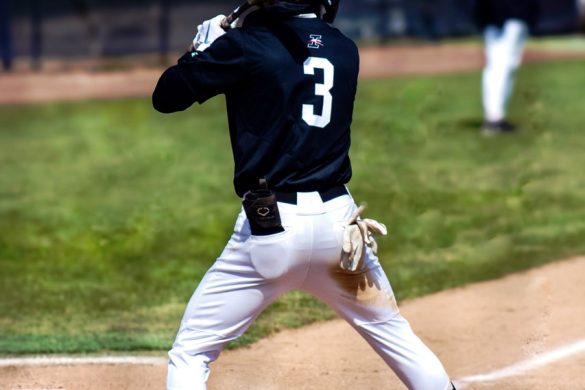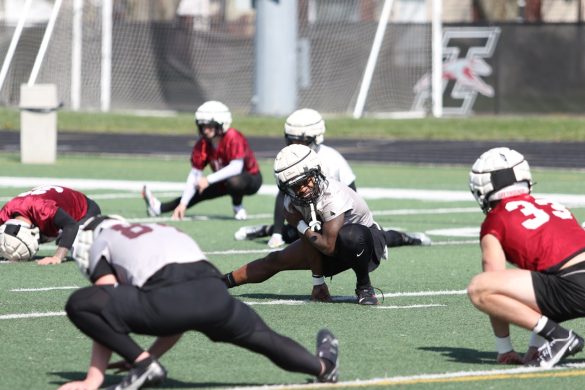The love of a sport drives many student-athletes to pursue a collegiate athletic career. With strict rules from the NCAA on eligibility and the potential for an injury always looming, some athletes have the option to redshirt.
According to the NCAA, Division II student-athletes have 10 semesters, or five years, of full-time enrollment at a university to compete in athletics. However, they only have four years of eligibility to participate in games, meets or matches against outside competition. When an athlete does not compete or is injured during a season, they are eligible to redshirt, or essentially extend their academic career into a fifth year to use all four years of their athletic eligibility. As Former Head Football Coach Bob Bartolomeo said, athletes have “five years to play four.”
While the NCAA recognizes and uses the term redshirt, it is not considered an official term. According to Senior Associate Athletic Director for Compliance Scott Young, the term redshirt is used more so for the media and sports information as a way to designate athletes that are taking a fifth year from those on the more typical four year track. Athletes are either redshirted by choice or due to injury.
According to Young, the NCAA has two requirements for a medical redshirt: The injury must have occurred in the first half of the season and the athlete must have competed in less than 30 percent of the season.
Redshirt sophomore lacrosse attacker Abigail Lagos was redshirted during her freshman year due to a season-ending hip injury. Lagos said that she was frustrated because she wanted to play. Instead of practicing, she said she had to be patient and focus on getting healthy.
“It was hard. It was mentally challenging, but then physically challenging coming back because I injured my hip so I wasn’t able to run. I wasn’t able to walk as much,” Lagos said. “So it was hard to sit out and I remember I really didn’t want to go to any of the practices and a lot of the team things because I wasn’t as involved. I felt kind of distant from them because I wasn’t able to do everything that they were doing, even though I really wanted to. So it was a difficult process. Definitely not fun.”
Despite her initial frustration, Lagos said she thinks that the extra year will be beneficial because she will have more knowledge and skill, which will enable her to play at a different level. She plans to go into a graduate program for her fifth year while competing.
“… it’s a great opportunity to become a better player and develop and work on your craft.”
Athletes can also redshirt by choice. According to Young, in order to do this, the athlete cannot participate in organized competition against an outside opponent at any point in their season. Any athlete is eligible to redshirt as long as they meet this requirement, but oftentimes that decision is made after a discussion with their coaches, according to Bartolomeo. He said that he and other coaches never want to use an entire season of an athlete’s eligibility by playing them only once or twice. The decision to redshirt a freshman football player is partially based on whether the freshman can help the team win, according to Bartolomeo.
“For example, if there are four junior or senior wide receivers on the team and we have a freshman wide receiver it’s going to be hard to beat those juniors or seniors out. But, we always tell them [freshmen athletes] that, the other end, if you’re the best then you will play,” Bartolomeo said. “It [redshirting] is kind of decided as we go through the season. We pretty much, about game three or four, stop and decide permanently whether he’ll redshirt or not.”
Redshirt freshman defensive back Jackson Weston said that it was his coaches’ choice to redshirt him. He said that they believed he needed more time to grow and develop as a player and that redshirting him gave him that opportunity. According to Weston, the extra year gives him time to improve in the weight room, on the field and a head start on his academics.
“It was tough at first knowing you’re just practicing and you don’t get to see the field on Saturdays, but over time it dwells on you, and you realize it’s a great opportunity to become a better player and develop and work on your craft,” Weston said.
Redshirt sophomore wrestler Cayden Whitaker had a similar experience. He said that he and his coaches both decided he could use an extra season of preparation for competing.
“…I knew I wasn’t fully prepared yet to come into the college level straight out of high school my freshman year,” Whitaker said. “I knew if I got better on a daily basis and worked hard, coming into my sophomore year–my redshirt freshman year–I would be ready, and I was. That’s why I started last year. And I think I’m really prepared and I was a lot more prepared than I would’ve been my true freshman year.”
According to Head Women’s Soccer Coach Holly Cox, she does not go into the season with a plan to redshirt specific athletes, but plays whoever is going to help the team win. When she makes the decision to redshirt an athlete, she said that she takes into account their academic standing, their strength as a teammate and their athletic ability. Unlike football, which often recruits athletes who will not see field time for their first year or two, Cox said she recruits athletes she can play immediately. Because of this, fewer soccer players redshirt.
“I tend to find that goalkeepers redshirt a lot compared to field players [who] get moved around a lot so they don’t redshirt,” Cox said. “You try not to change goalkeepers too much because you don’t want to change the team chemistry.”
Like Cox and other coaches, redshirting is not at the forefront of many athletes’ minds. Redshirt senior softball utility Brooke Reiss was not planning on redshirting. At the beginning of her junior year, she took a semester off of softball to focus on her academics. When she returned to the team, she said that she did not think it was fair for her to play when she had only been practicing with the team for half of the year. She said that she planned to return to the field her senior year and not use her fourth year of eligibility, but a discussion with her coaches led her to decide to redshirt instead. Reiss said that she is grateful for the opportunity to play a fourth season as well as get her masters degree due to this fifth year in school.
“It [redshirting] is going to be completely different for other people, but for me it’s like I get my masters degree out of this,” Reiss said. “I honestly never thought I was going to get my masters degree. I thought I was going to be done with school and start the real world life but I’m actually happy that I’m getting my master’s degree now. So the fact that I can do my last year [of competing] on top of getting my masters is a win-win.”
Redshirt senior thrower Austin Hogan was also not planning on redshirting when he did. His sophomore year, after the death of his throwing coach, Hogan said he decided to redshirt in order to process the loss and wait for the university to find another coach.
“I think the way it worked out, it worked out pretty well. I couldn’t have known that. If my coach passing wasn’t the case, then I think, going back, I would’ve redshirted my freshman year,” Hogan said. “But I think I was just a little arrogant my freshman year. I always planned on redshirting some year, but I just wanted to get in the swing of things and wanted to compete right away. I didn’t want to redshirt. But I was just a little too eager, but I don’t think it harmed me in any way to redshirt my sophomore year.”
Even though they were redshirted, both Hogan and Whitaker were able to compete unattached during their first redshirt season. According to Young, sports that allow individual competitors such as wrestling, track and field and swimming and diving, also allow redshirted athletes to compete unattached. This means that an athlete can compete, but only if they aren’t receiving any funding or support from the university for those unattached competitions. The athlete cannot wear the university’s uniform, be coached by its coaches, trained by its athletic trainers or travel with their teammates. Whitaker said that competing unattached during his first season allowed him to wrestle starters from other teams, which ultimately prepared him for his first year of attached competition.
While many athletes choose to use all four seasons of their eligibility after redshirting, according to Cox, they are not required to do so. For some athletes, competing in their fourth season might not fit with their academic timeline, so they choose to graduate and move on instead of extending an extra semester or year to participate. However, Reiss encourages athletes who have the opportunity to redshirt to do so.
“But being able to play your sport for one more year, you know a lot of people would die to do that again. Because once you’re done, you’re done. So being able to prolong it and push it back for one more year, it’s kind of a nice benefit on my part,” Reiss said. “If you had the opportunity, I would totally do it. Take advantage of it and enjoy it while it lasts because it goes by fast. My four years went by fast, and my fifth year has gone even faster.”









